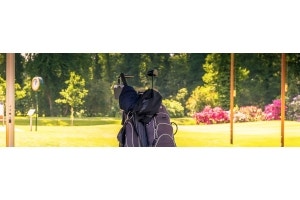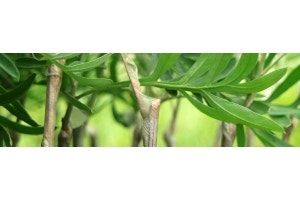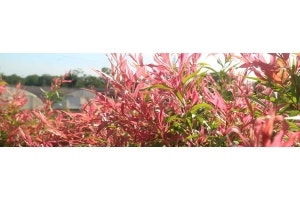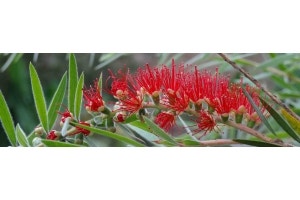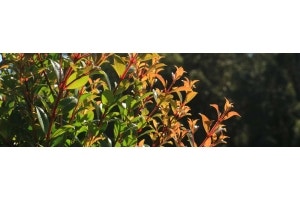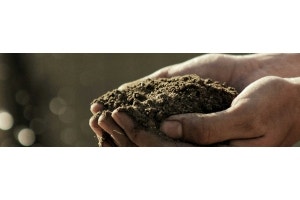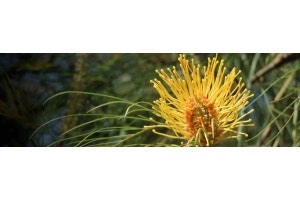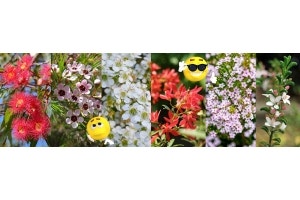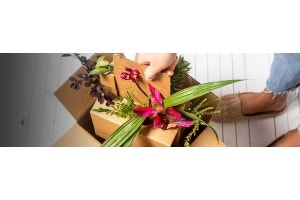
Gardening can be confusing to beginners - like every hobby, there's a lot of words that have specific meanings for those in the know.
Here's some of those words, to help you learn more about plants and how to care for them.
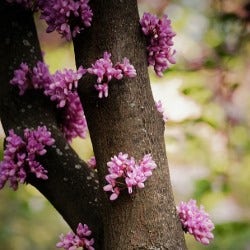
 tropical - thrives in climates that do not get colder than 15C, and have abundant rainfall throughout the year. Cairns and Darwin have this type of climate.
subtropical - thrives in climates that stay above OC even in winter, are humid, with warm summers and regular rainfall. Brisbane and Sydney have this type of climate.
Mediterranean - the area bordered by Italy, Spain, southern France, Greece, Turkey, Egypt, Syria, northern Morocco and Algeria.
tropical - thrives in climates that do not get colder than 15C, and have abundant rainfall throughout the year. Cairns and Darwin have this type of climate.
subtropical - thrives in climates that stay above OC even in winter, are humid, with warm summers and regular rainfall. Brisbane and Sydney have this type of climate.
Mediterranean - the area bordered by Italy, Spain, southern France, Greece, Turkey, Egypt, Syria, northern Morocco and Algeria.
Mediterranean plants thrive in climates with low humidity, very hot dry summers, and mild wet winters. Perth and Adelaide have this type of climate. epiphyte - a plant that can grow on tree trunks for support, and not directly into the soil. Ferns, orchids, and smaller bromeliads and airplants are most typical of this type of plant.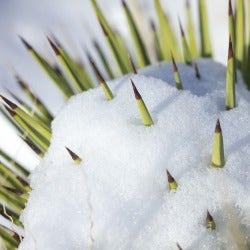
New tubestock plants should be protected from frost, until they have developed a woody stem, or are much larger in size. Good drainage will help plants survive cold; don't let roots sit in wet soil. frost hardy - will survive continual frost, snow, negative temperatures below -5C. acid/alkaline soil - refers to the pH level of the soil, where 7 is neutral, lower numbers are acid, and higher numbers are alkaline. Some plants will only grow well in acid or alkaline soils; most are generally unfussed so long as the soil is not extremely acid or alkaline. You can test your own soil with a pH kit or meter.
free-draining - loose airy soil that allows water to pass through it easily and doesn't become waterlogged or solid. Not to be confused with potting mix in a pot that has dried out completely and hardened, where the water runs straight through the gaps and out the bottom of the pot without wetting the soil.
friable - a technical word meaning crumbly; friable soil looks and feels like fresh breadcrumbs, and is the ideal texture. Not dry and dusty, not wet and sticky.
mulch - something put on the surface of soil to reduce water evaporation, cool the soil, and prevent light from germinating weeds. If the mulch is organic - compost, cane straw, bark chips - it will provide some nutrients or improve soil texture. Inorganic mulches such as pebbles are also ornamental.
humus - organic matter in soil made by leaves and other natural elements breaking down. Not to be confused with hummus, a delicious sesame-chickpea dip.
acid/alkaline soil - refers to the pH level of the soil, where 7 is neutral, lower numbers are acid, and higher numbers are alkaline. Some plants will only grow well in acid or alkaline soils; most are generally unfussed so long as the soil is not extremely acid or alkaline. You can test your own soil with a pH kit or meter.
free-draining - loose airy soil that allows water to pass through it easily and doesn't become waterlogged or solid. Not to be confused with potting mix in a pot that has dried out completely and hardened, where the water runs straight through the gaps and out the bottom of the pot without wetting the soil.
friable - a technical word meaning crumbly; friable soil looks and feels like fresh breadcrumbs, and is the ideal texture. Not dry and dusty, not wet and sticky.
mulch - something put on the surface of soil to reduce water evaporation, cool the soil, and prevent light from germinating weeds. If the mulch is organic - compost, cane straw, bark chips - it will provide some nutrients or improve soil texture. Inorganic mulches such as pebbles are also ornamental.
humus - organic matter in soil made by leaves and other natural elements breaking down. Not to be confused with hummus, a delicious sesame-chickpea dip.
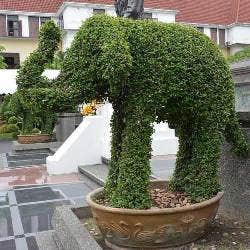
A hedge is a line of shrubs or bushes, usually of the same kind. Sometimes they are regularly clipped to form a neat outline (formal), sometimes they are left to grow naturally with only light occasional pruning (informal) fedge- a hedge of fruiting or edible plants topiary - plants, usually evergreen shrubs, clipped artistically into neat shapes. Sometimes shapes are simple and geometric, like a box ball, cone, or spiral, sometimes complex like a steam engine or elephant.
You can findhedging plants suitable for topiary here
prune - to cut a plant's stems with intent : to shape it, remove dead wood, or encourage growth
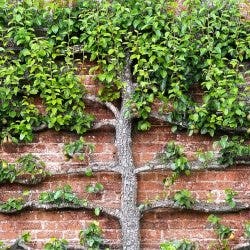 espalier - training a plant's side shoots horizontally along a wall or set of wires, for aesthetic reasons, or to increase fruit yield. A cordon is like an espalier, but one stem trained diagonally upwards rather than many branching horizontally.
coppice - regularly cutting a young tree close to the ground so that it produces multiple stems. An ancient technique used to produce timber for charcoal and firewood; now used to grow brighter bark, or juvenile leaves on gums.
pleach - cleaning a hedge or tree of all lower branches to (usually) above head height. These are then planted in a row, with upper branches often trained espalier-style. A pleached hedge looks like a formal hedge raised up on stilts.
standard - a mature plant with one long stem or trunk, topped with a rounded or cascading growing point, trained for ornamental reasons
espalier - training a plant's side shoots horizontally along a wall or set of wires, for aesthetic reasons, or to increase fruit yield. A cordon is like an espalier, but one stem trained diagonally upwards rather than many branching horizontally.
coppice - regularly cutting a young tree close to the ground so that it produces multiple stems. An ancient technique used to produce timber for charcoal and firewood; now used to grow brighter bark, or juvenile leaves on gums.
pleach - cleaning a hedge or tree of all lower branches to (usually) above head height. These are then planted in a row, with upper branches often trained espalier-style. A pleached hedge looks like a formal hedge raised up on stilts.
standard - a mature plant with one long stem or trunk, topped with a rounded or cascading growing point, trained for ornamental reasons
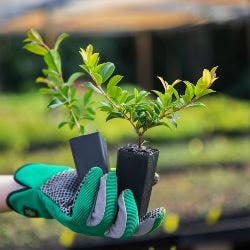
This is what we sell at Australian Plants Online. Read more about how we produce our plants in our blog post
Here's some of those words, to help you learn more about plants and how to care for them.

How does the plant behave?
annual - a plant that makes roots, leaves, flowers and seeds all in one growing season (usually a year), then dies. biennial - a plant that makes roots and leaves in the first year, flowers and seeds in the second year, then dies. perennial - a plant that grows year after year. herbaceous - soft leafy plants without woody parts, that usually die down in winter and regrow again in spring. Discover herbaceous perennials ideal for cottage gardens evergreen - maintains leaves all year round (which may or may not be green in colour) deciduous - loses its leaves at some point after the growing season, usually in winter in response to cold (like the birch tree pictured); but occasionally at other times and in response to other stimuli.

What does the plant look like?
cultivar - a CULTIvated VARiety, ie a named variety of plant bred deliberately by humans rather than occurring spontaneously in nature. single flower - one layer of petals around a central point. A daisy is a single flower. double flower - several layers of petals from a central point giving a full rounded appearance. A florist rose is a double flower. semi-double flower - somewhere between single and double, with a few layers giving depth, but not fully rounded. Many azaleas are semi-double. cauliflory - where the flowers emerge directly from the branches and trunk of a tree or woody shrub, instead of from fresh green growth. variegated - leaves that are patterned with another colour, usually cream or white or yellow on a green base. You can see more variegated leaves in our Foliage Colour category picotee - a colour form where the edges of the flower are a different colour, forming a distinct band around the petals' rim.
Where is the plant found?
native - found naturally in the wild. Australian natives are found 'somewhere in Australia', which is a big country. Plants native to Queensland might come from the hot dry dusty outback of Mount Isa, the mild coastal urban hills of Mount Coot-tha, or the steamy rain-soaked tropics of Mount Bartle Frere. (So be aware that just because a plant is a native, it will not thrive in every place.) endemic- found naturally in the wild in that location in the world only. This may be a country, a region, or even a tiny area. If you're really keen on natives, find out those endemic to your area. Local councils often have a planting list of these. naturalised- plants that are native to overseas locations but which have made themselves at home in the wild. tropical - thrives in climates that do not get colder than 15C, and have abundant rainfall throughout the year. Cairns and Darwin have this type of climate.
subtropical - thrives in climates that stay above OC even in winter, are humid, with warm summers and regular rainfall. Brisbane and Sydney have this type of climate.
Mediterranean - the area bordered by Italy, Spain, southern France, Greece, Turkey, Egypt, Syria, northern Morocco and Algeria.
tropical - thrives in climates that do not get colder than 15C, and have abundant rainfall throughout the year. Cairns and Darwin have this type of climate.
subtropical - thrives in climates that stay above OC even in winter, are humid, with warm summers and regular rainfall. Brisbane and Sydney have this type of climate.
Mediterranean - the area bordered by Italy, Spain, southern France, Greece, Turkey, Egypt, Syria, northern Morocco and Algeria. Mediterranean plants thrive in climates with low humidity, very hot dry summers, and mild wet winters. Perth and Adelaide have this type of climate. epiphyte - a plant that can grow on tree trunks for support, and not directly into the soil. Ferns, orchids, and smaller bromeliads and airplants are most typical of this type of plant.

What conditions does the plant like?
frost tolerant - will survive a couple of days of light frost, below zero temperatures, especially if temperatures warm up in the daytime.New tubestock plants should be protected from frost, until they have developed a woody stem, or are much larger in size. Good drainage will help plants survive cold; don't let roots sit in wet soil. frost hardy - will survive continual frost, snow, negative temperatures below -5C.
 acid/alkaline soil - refers to the pH level of the soil, where 7 is neutral, lower numbers are acid, and higher numbers are alkaline. Some plants will only grow well in acid or alkaline soils; most are generally unfussed so long as the soil is not extremely acid or alkaline. You can test your own soil with a pH kit or meter.
free-draining - loose airy soil that allows water to pass through it easily and doesn't become waterlogged or solid. Not to be confused with potting mix in a pot that has dried out completely and hardened, where the water runs straight through the gaps and out the bottom of the pot without wetting the soil.
friable - a technical word meaning crumbly; friable soil looks and feels like fresh breadcrumbs, and is the ideal texture. Not dry and dusty, not wet and sticky.
mulch - something put on the surface of soil to reduce water evaporation, cool the soil, and prevent light from germinating weeds. If the mulch is organic - compost, cane straw, bark chips - it will provide some nutrients or improve soil texture. Inorganic mulches such as pebbles are also ornamental.
humus - organic matter in soil made by leaves and other natural elements breaking down. Not to be confused with hummus, a delicious sesame-chickpea dip.
acid/alkaline soil - refers to the pH level of the soil, where 7 is neutral, lower numbers are acid, and higher numbers are alkaline. Some plants will only grow well in acid or alkaline soils; most are generally unfussed so long as the soil is not extremely acid or alkaline. You can test your own soil with a pH kit or meter.
free-draining - loose airy soil that allows water to pass through it easily and doesn't become waterlogged or solid. Not to be confused with potting mix in a pot that has dried out completely and hardened, where the water runs straight through the gaps and out the bottom of the pot without wetting the soil.
friable - a technical word meaning crumbly; friable soil looks and feels like fresh breadcrumbs, and is the ideal texture. Not dry and dusty, not wet and sticky.
mulch - something put on the surface of soil to reduce water evaporation, cool the soil, and prevent light from germinating weeds. If the mulch is organic - compost, cane straw, bark chips - it will provide some nutrients or improve soil texture. Inorganic mulches such as pebbles are also ornamental.
humus - organic matter in soil made by leaves and other natural elements breaking down. Not to be confused with hummus, a delicious sesame-chickpea dip.

What have we done to the plant?
hedge - to quote Eddie Izzard, "bushes, why are you queueing?"A hedge is a line of shrubs or bushes, usually of the same kind. Sometimes they are regularly clipped to form a neat outline (formal), sometimes they are left to grow naturally with only light occasional pruning (informal) fedge- a hedge of fruiting or edible plants topiary - plants, usually evergreen shrubs, clipped artistically into neat shapes. Sometimes shapes are simple and geometric, like a box ball, cone, or spiral, sometimes complex like a steam engine or elephant.
You can find
 espalier - training a plant's side shoots horizontally along a wall or set of wires, for aesthetic reasons, or to increase fruit yield. A cordon is like an espalier, but one stem trained diagonally upwards rather than many branching horizontally.
coppice - regularly cutting a young tree close to the ground so that it produces multiple stems. An ancient technique used to produce timber for charcoal and firewood; now used to grow brighter bark, or juvenile leaves on gums.
pleach - cleaning a hedge or tree of all lower branches to (usually) above head height. These are then planted in a row, with upper branches often trained espalier-style. A pleached hedge looks like a formal hedge raised up on stilts.
standard - a mature plant with one long stem or trunk, topped with a rounded or cascading growing point, trained for ornamental reasons
espalier - training a plant's side shoots horizontally along a wall or set of wires, for aesthetic reasons, or to increase fruit yield. A cordon is like an espalier, but one stem trained diagonally upwards rather than many branching horizontally.
coppice - regularly cutting a young tree close to the ground so that it produces multiple stems. An ancient technique used to produce timber for charcoal and firewood; now used to grow brighter bark, or juvenile leaves on gums.
pleach - cleaning a hedge or tree of all lower branches to (usually) above head height. These are then planted in a row, with upper branches often trained espalier-style. A pleached hedge looks like a formal hedge raised up on stilts.
standard - a mature plant with one long stem or trunk, topped with a rounded or cascading growing point, trained for ornamental reasons

What type of plant is it?
seedling - the first growth stages of a seed, usually 2-4 pairs of leaves on a tiny stem, and the start of a root or root network. Think of cress growing in a punnet. cutting - the growing tip of a mature plant, cut and used to create a new plant tubestock - a well-rooted large cutting, usually 5-15cm tall, with multiple pairs of leaves (depending on the kind of plant it is) and ready for planting out or potting on.This is what we sell at Australian Plants Online. Read more about how we produce our plants in our blog post









